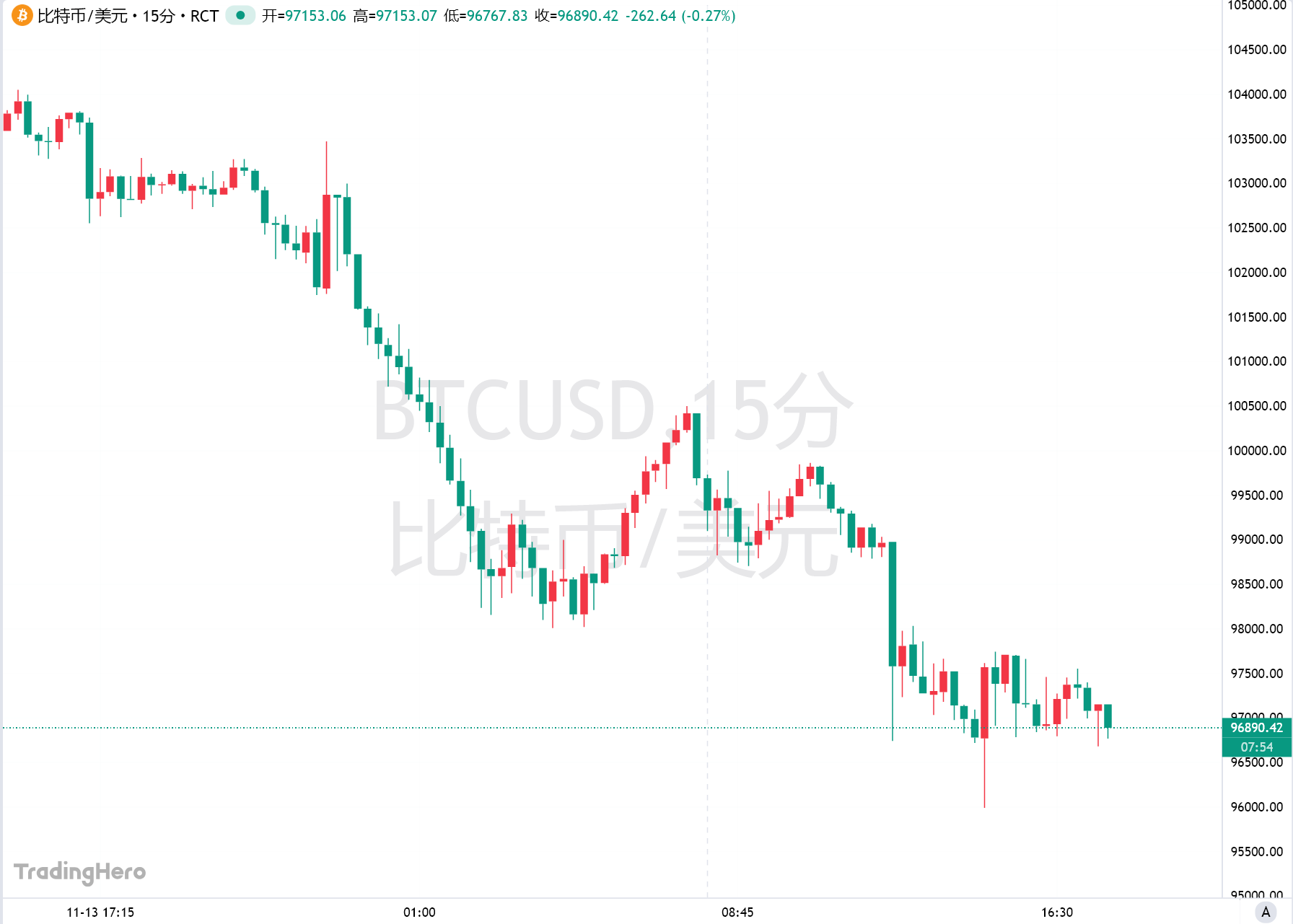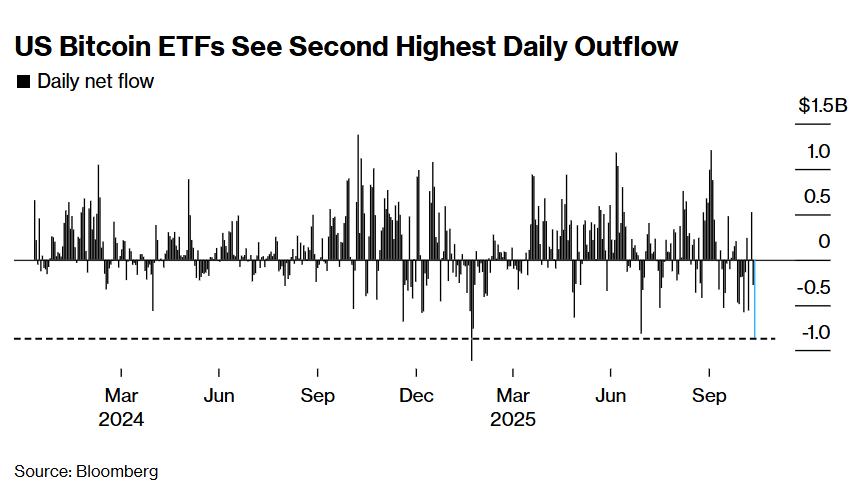The wave of cryptocurrency liquidations continues! US Bitcoin ETF sees second highest single-day outflow in history
Due to the reassessment of Federal Reserve rate cut expectations and the fading rebound of the U.S. stock market, the crypto market continues to experience liquidations, with significant ETF capital outflows and options traders increasing bets on volatility. Institutions warn that technical support for bitcoin above $90,000 is weak.
Affected by the sweeping risk-averse sentiment in the market, investors have withdrawn nearly $900 million from bitcoin funds, and the bitcoin price has further fallen below the $100,000 mark.
This largest digital asset plunged as much as 2.8% during Friday's session, dropping below $96,000, then regained some ground, but is still down more than 20% from the record high set in early October.

According to CoinGecko data, on October 10, the cryptocurrency market saw $19 billion in liquidations, causing the total market capitalization of all cryptocurrencies to evaporate by more than $1 trillion. Since then, the market has remained under pressure. CoinGlass data shows that the wave of liquidations continues, with leveraged crypto bets worth over $1 billion being closed out in the past 24 hours.
Meanwhile, bitcoin exchange-traded funds (ETFs) recorded a net outflow of about $870 million on Thursday, marking the second-largest single-day redemption since the launch of such funds.
 The US bitcoin ETFs saw the second-largest single-day outflow in history
The US bitcoin ETFs saw the second-largest single-day outflow in history Earlier this week, US stocks briefly rebounded, buoyed by the positive news of the US government shutdown ending, but the rally quickly faded. With key economic data releases delayed, traders began to question whether the Federal Reserve has grounds for a short-term rate cut—a reassessment that is putting new pressure on riskier areas of the market.
“The current sell-off is entirely correlated with other risk assets, but given the higher volatility of cryptocurrencies, their declines are more pronounced,” said Max Gokhman, Deputy CIO of Franklin Templeton Investment Solutions. “Until institutions become more deeply involved in the crypto market and investment targets are no longer limited to bitcoin and ethereum, the correlation between crypto and macro risks will remain high.”
Market liquidity has also shrunk significantly. Kaiko data shows that market depth—the ability of the market to absorb large trades without significant price fluctuations—has dropped about 30% from this year's highs.
“Since President Trump took office, bitcoin has now turned downward, and the entire cryptocurrency market capitalization has given back this year's gains. From the current level to $90,000, (bitcoin) has limited technical support, and market sentiment may remain sluggish until further positive news emerges,” said SignalPlus partner Augustine Fan.
Nick Ruck of LVRG Research said that in the options market, traders are increasingly betting on volatility, with demand for neutral strategies such as straddles and strangles on the rise.
Disclaimer: The content of this article solely reflects the author's opinion and does not represent the platform in any capacity. This article is not intended to serve as a reference for making investment decisions.
You may also like
How to evaluate whether an airdrop is worth participating in from six key dimensions?
Airdrop evaluation is both an "art and a science": it requires understanding human incentives and crypto narratives (art), as well as analyzing data and tokenomics (science).

Raking in crypto dividends: How did the family of Trump's Commerce Secretary earn $2.5 billion a year?
After Howard Lutnick became the Secretary of Commerce in the Trump administration, his family's investment bank, Cantor, is heading for its most profitable year ever.

Qianwen app: How will Alibaba create China’s “ChatGPT”?
This is the third time this year that Alibaba has concentrated its efforts on major initiatives.
Real Vision founder: Federal Reserve may adjust policy to address liquidity crisis
